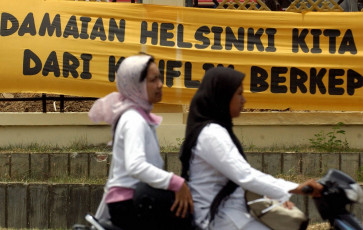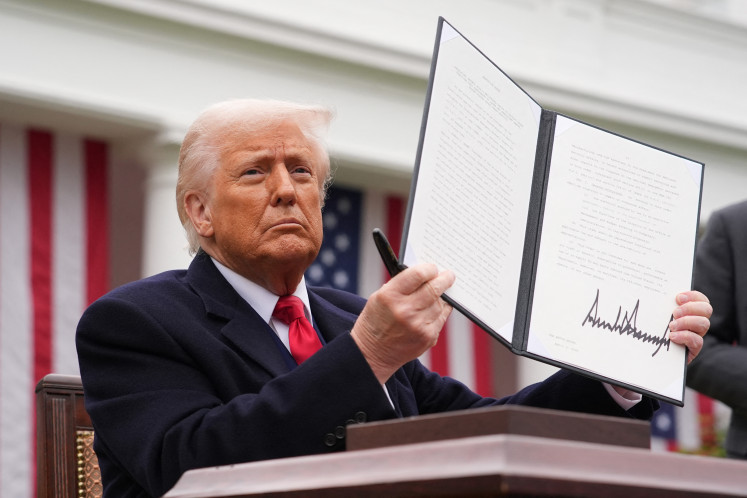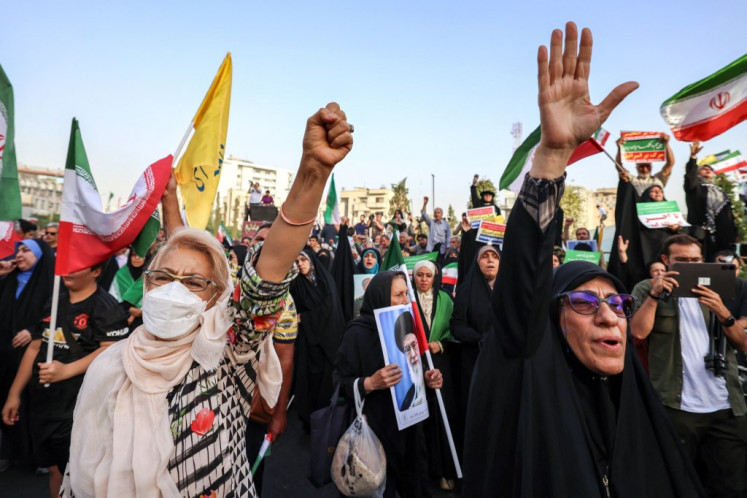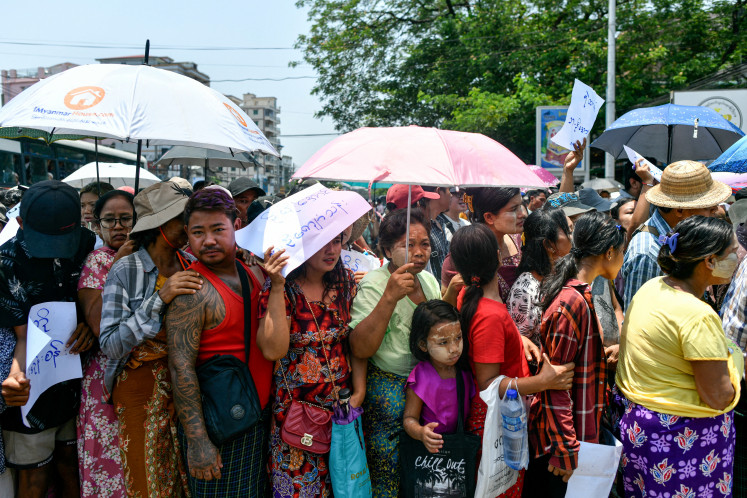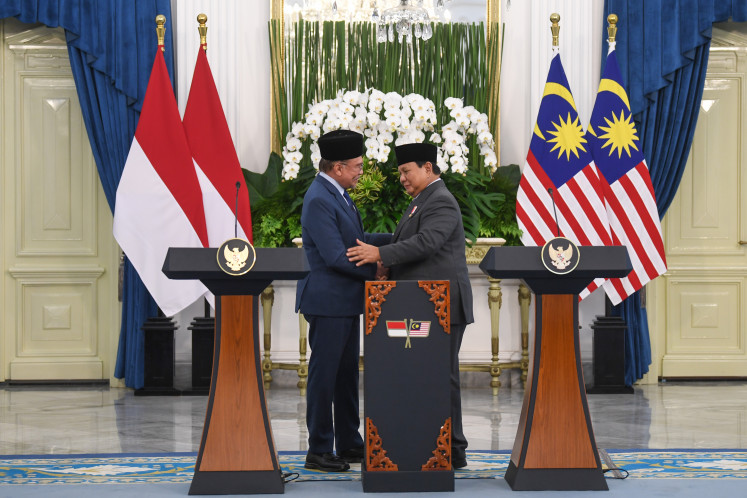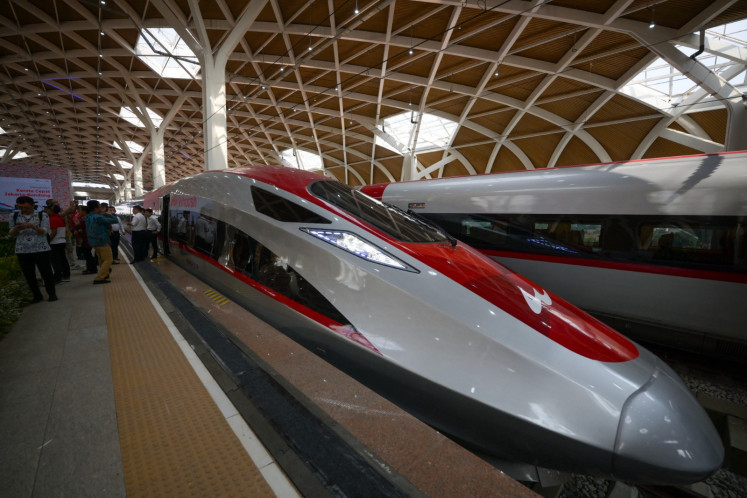Popular Reads
Top Results
Can't find what you're looking for?
View all search resultsPopular Reads
Top Results
Can't find what you're looking for?
View all search resultsWhy the COVID-19 pandemic was a ‘strategic surprise’ for Indonesia
Many have argued that the pandemic is Indonesia’s biggest “strategic surprise” in decades. Some might even argue that it is an unforeseen magical “black swan” event.
Change text size
Gift Premium Articles
to Anyone
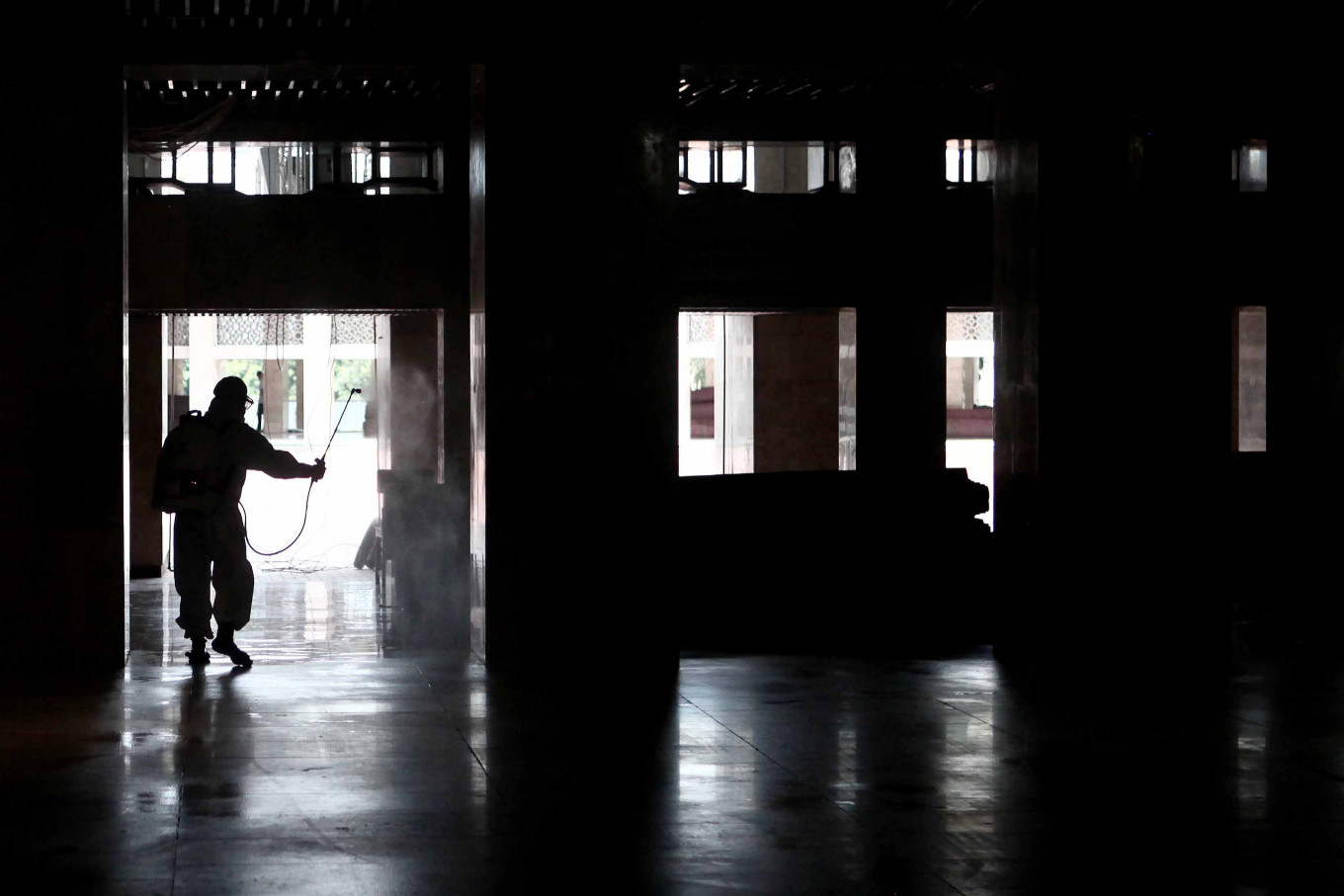 Workers spray disinfectant in the Istiqlal Mosque Praying Area in Jakarta, Friday, March 13, 2020. (JP/Seto Wardhana)
Workers spray disinfectant in the Istiqlal Mosque Praying Area in Jakarta, Friday, March 13, 2020. (JP/Seto Wardhana)
I
ndonesia was and remains utterly unprepared to deal with the COVID-19 crisis. Many have argued that the pandemic is Indonesia’s biggest “strategic surprise” in decades.
A strategic surprise is simply an unpredicted development or event with decisive and transformative, sometimes revolutionary, effects. Some might even argue that it is an unforeseen magical “black swan” event.
But by uncritically painting the pandemic as an unforeseen strategic surprise, some analysts may implicitly or inadvertently absolve the government of any responsibility. After all, they argue, COVID-19 was a “non-natural disaster” that many states could not have predicted.
Clearly this claim is wrong. Scientists, epidemiologists and global health scholars have warned about a pandemic for years. Various public health outbreaks, from Severe Acute Respiratory Syndrome (SARS) to Ebola, over the past two decades should have driven this point home.
More importantly, research shows that events deemed as strategic surprises are not inherently surprising by nature. Political scientists
Charles Parker and Eric Stern note in the journal Political Psychology (2002) that strategic surprises such as 9/11 or Pearl Harbor might be seen instead as the victim’s lack of preparedness based on erroneous judgements of whether, when, where and how it would be “attacked”.
Military analyst Ephraim Kam argues in Surprise Attack: The Victim’s Perspective (1988) that a strategic surprise consists of three elements.
First, the event (or attack) seems inconsistent with the victim’s expectations and assumptions. In other words, how “surprising and disruptive” an event is depends on the nature and depth of the assumptions guiding the victim’s assessment.
Despite ample warnings from dozens of countries hit by COVID-19 outbreaks throughout February and early March, Indonesian policymakers were in denial. They publicly clung to unfounded assumptions about the “saving power” of Indonesia’s temperature or humidity. Some even implied that traditional herbs or dishes could be antidotes to the virus while others suggested that prayers would be sufficient to stem any viral tide.
Part of the problem stems from ignorance of public health and science. Consider the fact that many policymakers still refuse to examine Indonesia’s avian influenza outbreak a few years ago as a public health emergency. Instead, they parrot conspiracy theories about the role of great powers in “weaponizing and commercializing” the virus.
Another part of the problem is the recent “securitization” of public health including the pandemic. When security officials manage a problem, transparency, data reliability and open communication – critical requirements in public health emergencies – are rarely part of the equation. That the current administration remains untested in national emergencies and obsessed with infrastructure and investments further suggests there was a lack of incentives in seeking out dissenting voices on a possible outbreak.
The pandemic itself, in other words, was not literally “surprising” but it took us by surprise because policymakers held faulty and erroneous assumptions.
Second, a strategic surprise implies there is a failure in advance warning. The strength of the surprise is often in reverse proportion to the timing and clarity of the early warning.
On this front, it is ironic that some officials are citing “intelligence modelling” as a basis to make public health decisions, even though the intelligence community should have warned us earlier about the pandemic.
If we look at public statements by former government and intelligence officials as well as observers over the past two months, many hinted at conspiracy theories about the novel coronavirus as a “biological weapon”. Consequently, rather than boosting our medical intelligence, our energy is spent on separating noise from signal.
Nevertheless, President Joko “Jokowi” Widodo acknowledged that he relied on an “intelligence approach” in managing the outbreak to prevent the public from panicking. While it is unclear what that approach entails, it is plausible that the intelligence community warned political leaders about the pandemic but they failed to respond, or they ignored the assessment provided.
Either way, if we accept the pandemic was a strategic surprise for Indonesia, we have to ask difficult questions about our intelligence assessments in the near future.
Finally, a strategic surprise lays bare the lack of adequate preparations by the victim. From this benchmark, even if the administration had the right assumptions about the pandemic and had listened to the best intelligence warning, Indonesia may still not have had the capacity to respond rapidly.
Almost every major indicator – from hospital beds, isolation wards and ventilators, to doctors and more – tells us that Indonesia’s health system is seriously unprepared. The 2019 Global Health Security Index ranked Indonesia’s emergency preparedness and response planning as well as its health capacity in clinics, hospitals and community care centers at 67 and 69 out of 195 countries respectively. The same index also scored Indonesia’s major risks – political and security, infrastructure adequacy and public health vulnerabilities – quite poorly.
This should not be surprising. Indonesia’s healthcare expenditure in 2016 was only roughly 3 percent of our gross domestic product (GDP), according to World Bank data. By comparison, South Korea spent around 7 percent and Australia about 9 percent of their GDP on health care.
These three benchmarks show the pandemic was not some magical “black swan”. It was a disaster in the making — one that was foreseeable and manageable, even if not necessarily preventable. The government is absolutely responsible for the unfolding catastrophe.



